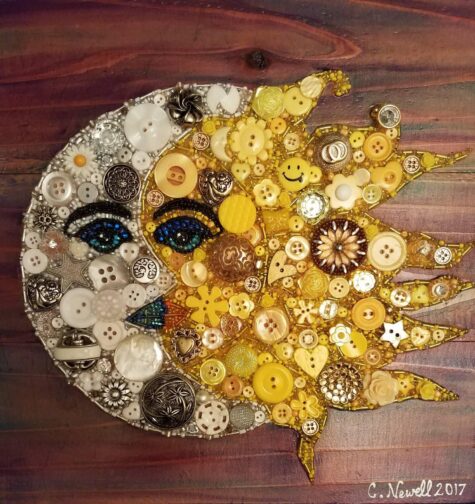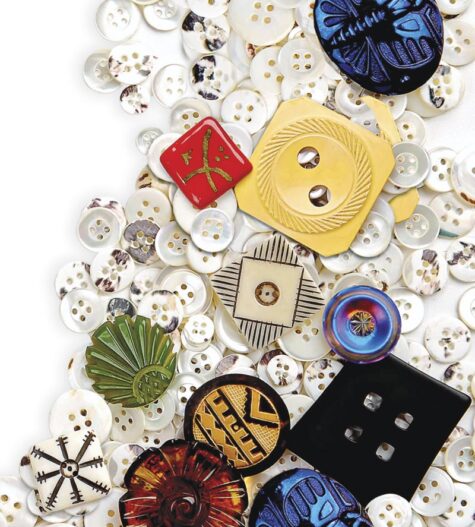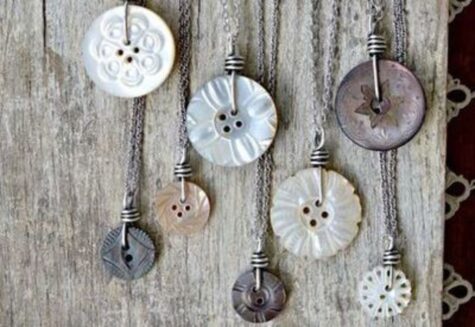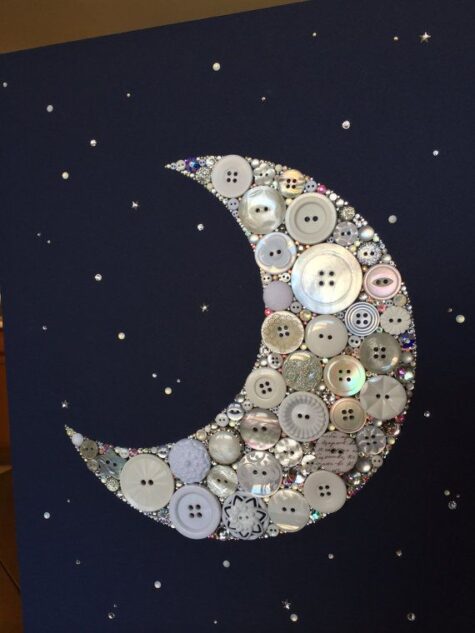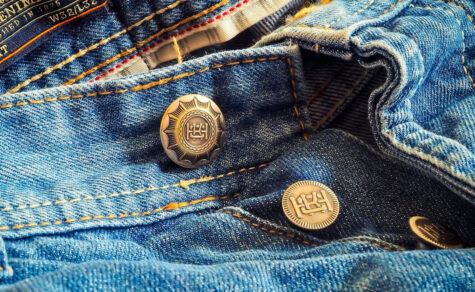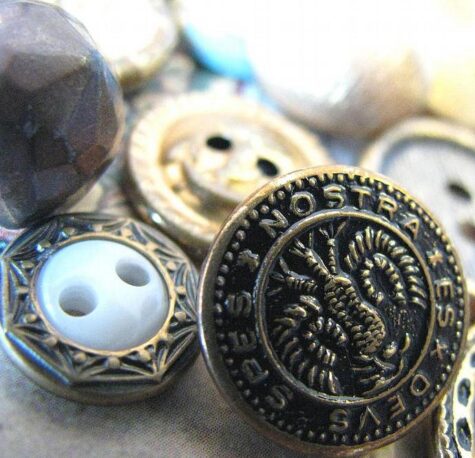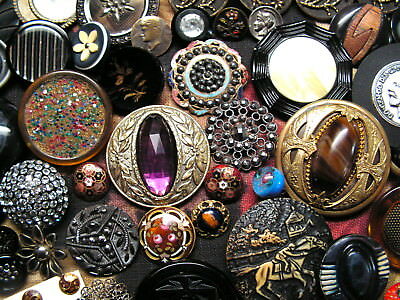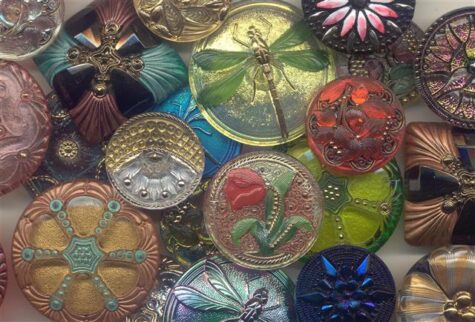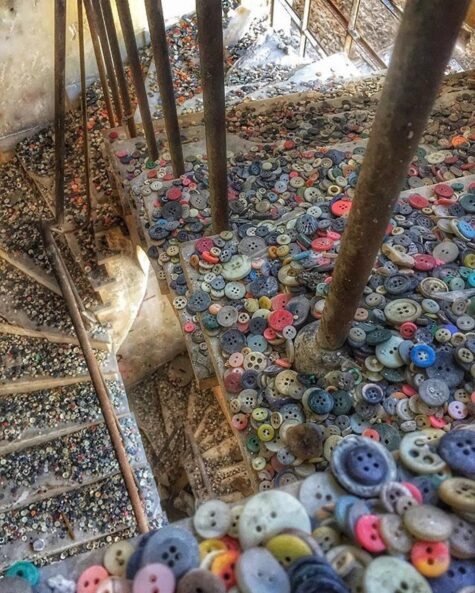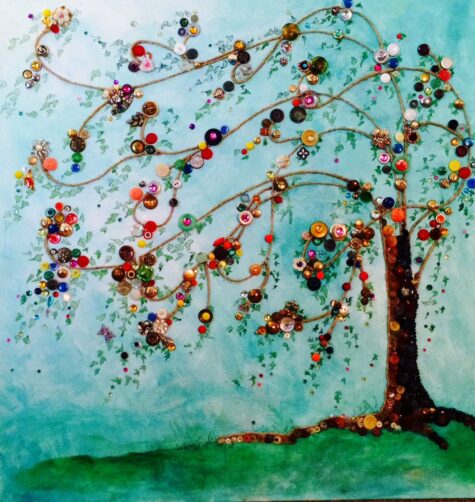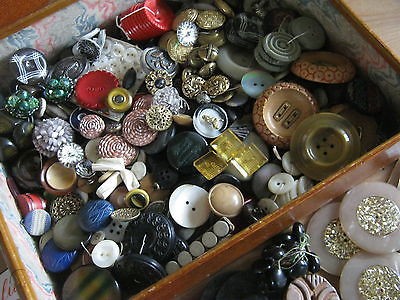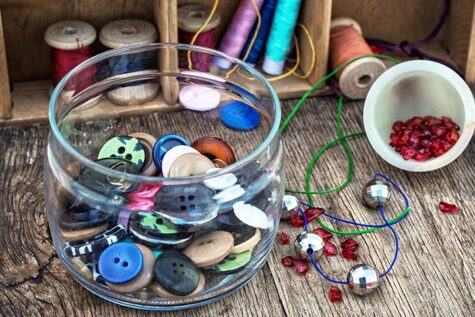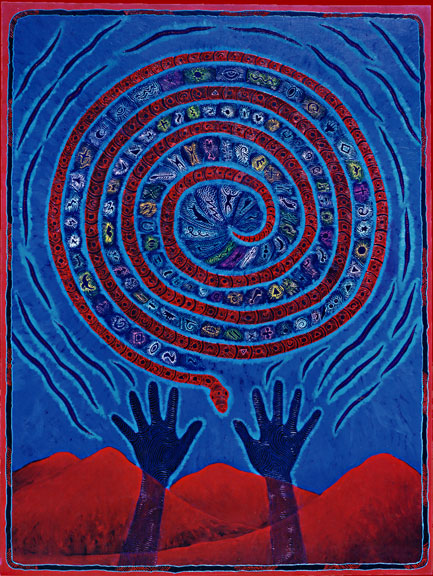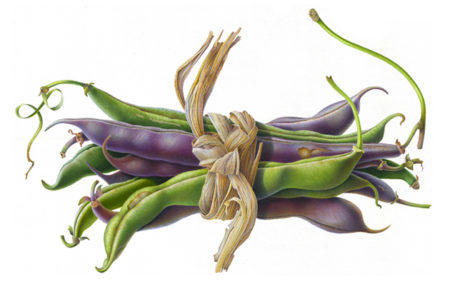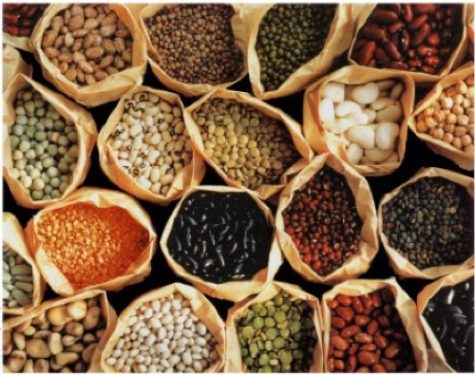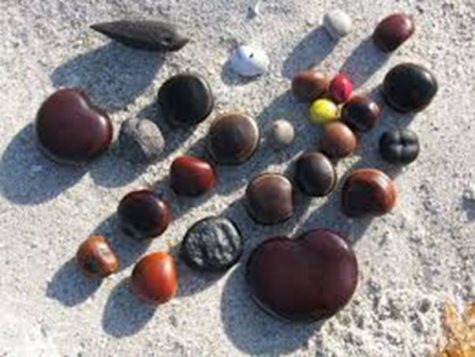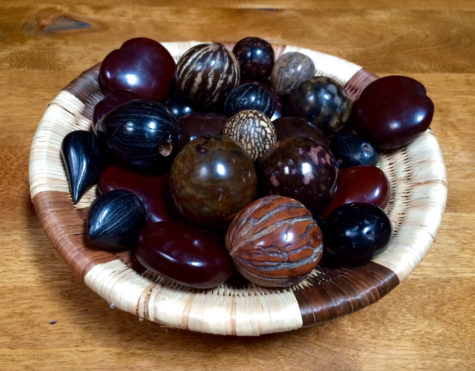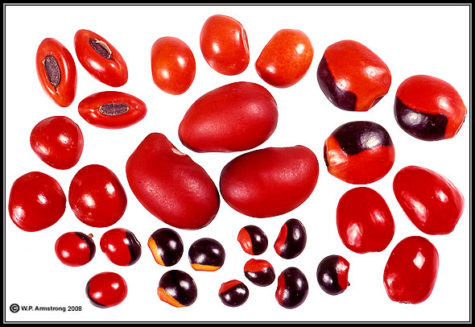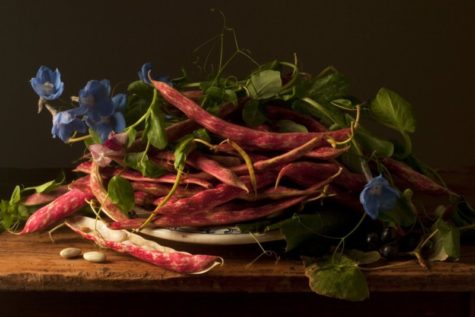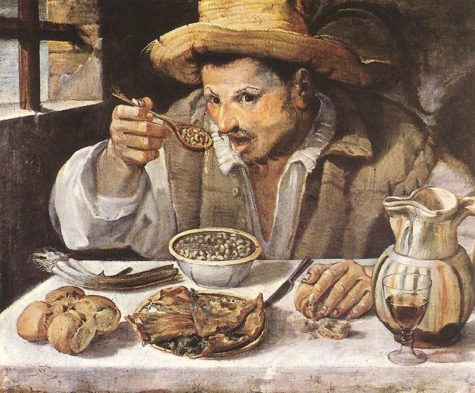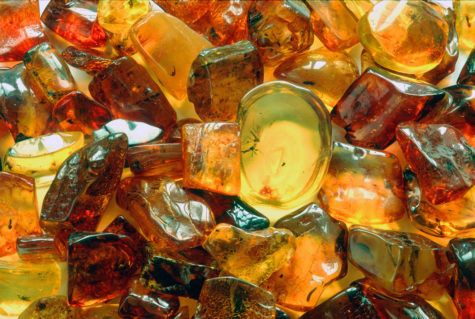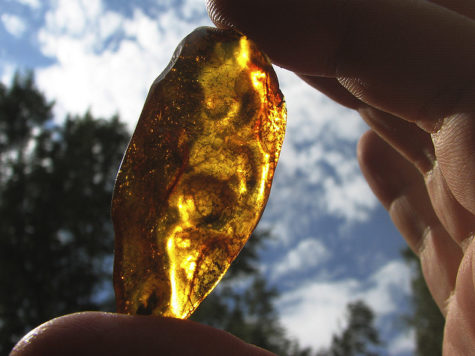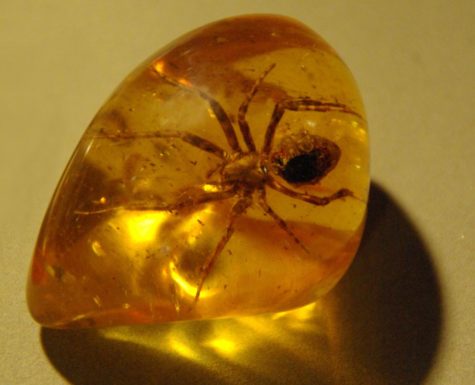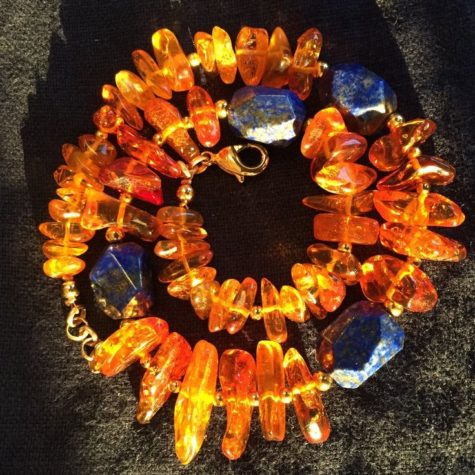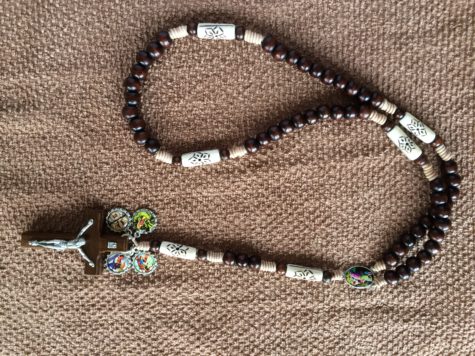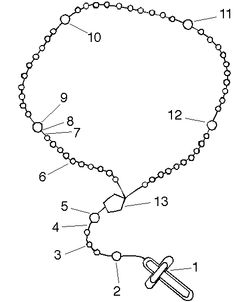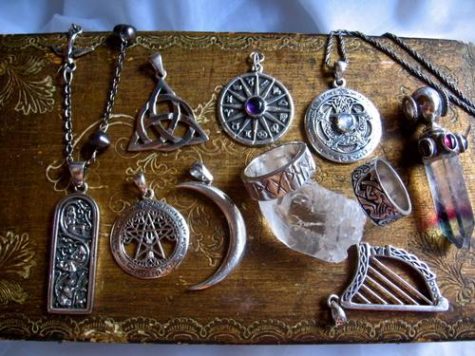Amulets
Buttons are incredible little tokens much like coins or rocks that can be used for a plethora of fun and useful witchy crafts. They’re small, portable, wearable, transferable, and can be made easily or found for very little money at most thrift stores and craft shops!
Think of their physical function – they keep clothing and linens closed….therefore protecting what is underneath from weather, illness, dirt, etc. So automatically, with buttons think protection and comfort. Also, buttons are tools that sit on a threshold. YES. The threshold between us and the outside world! So they are also useful in spirit work.
Meditate on buttons and you start seeing all sorts of sort of oppositions – the sort of sex and death, Lear, at the end of King Lear where Cordelia is dead he asks somebody to undo her button to help her breathe and at the same time we have buttons as the things you fumble with before the act of generation.
In ancient gypsy traditions buttons represent sense of renewal.
Who knew buttons are magickal little tools? Our ancestors did, of course! Did your grandmother or aunt keep a tin or container of random buttons? Mine did and gifted to me. At the time, I wondered why a tin of buttons was so important. Now I know. If you were blessed with a tin of buttons from your family, keep it and make use of it!
- Ancestral work!
If anyone in your family has sewed they probably have a box/jar/tin of sewing supplies left around with some buttons in it! Use these on ancestral altars to again create that connection.
- Friendship spells!
Buttons are a kind of clasp or connection, therefore using buttons in spells for bonding can symbolize a connection, or clasp, of two or more people!
- A Button Magick Charm Necklace
Back in the day our ancestors collected and saved buttons. If you have a collection of buttons, you can make a magickal button necklace. Or what was once called a wishing necklace. For each button you string onto the necklace, pray over it your intention. Different colors for different intentions, etc. Make it fun and be creative!
- Divination.
Often buttons are used for eyes on dolls and stuffed animals and placing a button in front of you during a divination ritual can help you visualize and therefore open your third eye.
- Elemental Buttons
Buttons of certain materials can be used to harken back to certain elements, like clay or wooden buttons for Earth, or shell buttons for water.
- Altar Decorations
Buttons can be used as altar decorations, and larger buttons can act as tiny plates, display stands, or bases for mini offerings!
- Button Magic With Bags and Bottles
Buttons are great to add to shaker jars. When you shake the jar, they make awesome sounds! For me, part of the allure of a shaker jar is not only the prayer while shaking, but the sensory stimulation. The sounds release energy along with your prayers.
Also, buttons can be added to spell bottles and bags. Again, choose colors and styles matching your intentions. Think of the button’s job in the spell as “buttoning” up the situation.
- Sigils
Draw or paint sigils on the back of buttons with a sharpie and seal with some clear glue/resin. Sew them onto your shirt, bag, or thread them to wear as jewelry!
- A Declaration of Love
Japanese male students often confess their love to a female by giving them the second button from the top of their school uniform. The second button is the one closest to the heart.
Sewing Buttons With Intention
- To attract money – attach the button with the letter Z with a diagonal strip to the other side.
- For many fans – the stitches should be in the form of an hourglass: two horizontal stripes and the letter X in the middle.
- To strengthen friendship – an equal sign;
- Success in creativity – the letter A.
- Success in business – letter Z;
- Harmony with the outside world – a square;
- Gaining developed intuition – two vertical stripes;
- Health promotion – the cross;
- Increase of well-being – a cross and two verticals;
- For gaining passionate love – a cross and a square.
Dreaming About Buttons
It is important to understand that the dream is a source of mystery and fascination dependent upon the significant details of the button in your dream. Also, take into consideration your own thoughts feelings and experiences related to buttons and what they might personally mean to you.
There are three types of dreams about buttons.
- A button in relation to a garment.
- Part of the body, as in a belly button.
- A button in connection with a push-button switch.
What we are talking about here, in this article is the meaning of dreams about the type of button that is a fastener or decoration on clothing. As you can see there are many different meanings, and variations of meaning.
What does it mean to dream about buttons? One thought process when you dream about buttons is that you have the ability to hold a situation together.
Perhaps people rely on you to be the glue that keeps everyone together. Maybe you yearn for someone else to take on this role if it’s a big weight on your shoulders.
Buttons often indicate that two people need to come together as one. Or perhaps you want to get closer to someone in your waking life, even if their views oppose yours.
If the buttons were large, then you may need to invest a lot of time and effort into reconnecting with this person. If the buttons were small, perhaps the change you need to make is very small but will have a significant impact on your relationship.
If the button is broken in your dream this divides the dream meaning, it could mean a split decision, or that things could go one way or another.
When you see a broken button in a dream, it may also mean that you look at many things negatively. The worries and problems that you have are a part of life, and you should overcome them slowly. You need to know that there are no completely carefree people. Don’t miss beautiful moments because of pessimism.
Dreaming of finding a button means that you are in a difficult situation, but you are not losing hope of getting out of it soon. That is the right way of thinking because you would have a harder time solving that problem if you were in a bad place mentally. If you can’t solve a problem right away, sleep on it. Your mind will be clearer, so you will come up with a solution faster.
When you are dreaming of sewing in a button on something, it means that you don’t like to spend money. You probably had financial problems in the past, so you have learned a lesson that stopped you from finding yourself in that situation again. You are watching every penny now and trying to save some for emergencies. You would rather gladden your loved ones with gifts than spend that money on yourself.
Another possibility is that you want to do something you love. You probably tried to do a job that you went to school for, but you have realized that things are not as they seem. You will make a decision to change your profession after many sleepless nights, but many people will judge you for it.
Alternatively, if you dream of sewing buttons onto an item, you might shortly lose a friend over a minor disagreement.
If someone else in your dream is sewing in a button on something, it means that you will cut every contact with someone you care about. Nothing specific will happen for you two to distance from each other, but you may stop hanging out because of different priorities or views on life. You will be sorry at first, but you will soon realize that life goes on. The good thing is that you will not argue, so you will be able to look them in the eye when you see them on the street.
If you are dreaming of unbuttoning your clothes, it means that you are ready to open up to other people mentally, emotionally, and sexually. You will realize that you have been missing out on many things because of stubbornness and the defense mechanism that you have created to protect yourself from people. If you have been single for a long time, your decision will be crucial when it comes to changing that. If the relationship with your partner is not the best, you will finally get enough courage to tell them what is bothering you.
It’s also possible the dream is telling you to share your thoughts and feelings with someone if you have a habit of keeping everything close to your chest.
A dream in which you are buttoning up your clothes symbolizes your firm attitude toward strangers. Those close to you know the true you only. Everyone else sees an arrogant person who believes that they are better than others. When you let someone get closer to you, they usually change their opinion of you entirely.
It may also symbolize your tendency to keep your emotions to yourself and keep your feelings in check. Are you doing this more than you normally would? If so – why?
To dream that you are doing up a buttoned coat indicates that you would never be perfectly wealthy in the future – you would always want more in life — sometimes money cannot buy happiness.
A button in a dream symbolizes gain. You will successfully finish one project that you have invested a lot of time and effort in. You will be extremely dedicated to every detail and make sure to do the job the best you can. Your superior will be amazed by the results, and they will be happy to do business with you again.
The actual buttons and design also need to be taken into consideration. If the buttons are large then this indicates that you need to put a lot of energy into projects going forward. A particularly small button in your dream indicates that you need to be more confident in business matters.
Wooden buttons indicate that times are going to be difficult for the next few months, however, that you’re going to overcome these difficulties as they will be followed by rebirth. If the buttons are made of plastic you may receive some good ideas in your life if you dream of a button that isn’t made of plastic then you are likely to encounter trouble over enterprise and you should take the advice of friends.
When you see a red button, it means that you will react too violently to the criticism your loved ones or superiors will give you. You will not have an understanding of their advice since you believe that you are right.
People usually see black buttons in dreams, which symbolizes stability. You might be afraid that you will lose a job, or you are worried about your children’s future. This dream symbolizes the fear of uncertainty, which is justified in your case.
White buttons predict conflicts and problems with a loved one that you will overcome if you realize how much that person means to you only. If you have recently had an argument with your partner, you will decide to make peace with them as soon as possible so that you can stay together.
A golden or shinny button on a uniform can have multiple meanings. When younger people dream of it, it symbolizes their desire to prove themselves and make progress in their careers. If a young woman has this dream, that symbolizes her desire to marry someone rich and have a bright and carefree future.
When you see a multiple-colored button in a dream, that symbolizes progress. You will probably pass an important exam with flying colors or finish a difficult project at work. You will be proud of yourself since you didn’t hope that you will get rid of such a big worry in such a short period of time.
To see buttons on a cloth indicates that some people in your life are going to be difficult in the forthcoming future. It is your prerogative to ensure that you overcome these difficulties and work well with other people. If you are a man and you received this dream if indicates the need to be honest with people.
It is important for you to recognize that people in your life often influence you. To dream that you see more than one button in your dream is an indication that you’re going to encounter the medical profession.
To dream that you are in a shop and purchase buttons indicates that your companions are going to be kind of thoughtful towards you.
Dreaming of buying buttons means that a friend’s or loved one’s gesture will amaze you. Someone will put in an effort to surprise you with nice words or deeds. You will remember that moment for the rest of your life. Another meaning of this dream is renewal. You may get in touch with someone who meant a lot to you in the past.
If you are dreaming of selling buttons, your subconsciousness is warning you that it is time to improve your relationship with a loved one. Frequent arguments or conflicts have destroyed the harmony in your relationship, so you have distanced from one another. You miss the conversations you had and pieces of advice you got from them. Because of that, you should leave your pride aside and show understanding and readiness to compromise.
To drop a button in your dream indicates that you’re going to have more pain or injury in the near future. If you dream of seeing buttons on children in the dream will fill the need for to the minor reasons of society. The dream also indicates that you are likely to attend church in order to find a more specific meaning of your existence.
To dream of many buttons in a row is an indication that you should avoid being superstitious. This dream also signifies that you do not like high school or the learning environment.
If you dream of many buttons on a pile, that symbolizes indecisiveness. You second guess every decision you have to make. Don’t complicate your life for no reason. The easiest solutions are always the best.
A dream in which you lose a button suggests that you should manage money better. You have been spending everything you earn lately, so you often have to reach in a piggy bank reserved for emergencies. Think about your priorities and make a monthly budget plan. That is the only way to control your expenses and realize where you are making mistakes.
Don’t forget! The meanings of dreams be simple. If you have recently sewn buttons on your clothes, and that has made an impression on you, you may dream about it. Dreams that have special meaning are usually dreams that are quite vivid and stay in your mind.
Button Superstitions
Buttons and the superstitions surrounding them are fascinating. While we tend to think very little about these ancient fasteners, our recent ancestors had a lot to say about the magick in buttons.
For example, it is believed that you cannot sew a button “on yourself” so as not to sew up the mind and memory . As an antidote, it is recommended to clamp a thread or other object between your teeth, even a piece of clothing.
Another belief says that sewing buttons on right before the New Year is not the best idea. Better to wait until the next day.
If you are preparing to meet a person who is unpleasant for you, then fasten all your buttons as tightly as possible. The buttons will work like a talisman and protect from any negativity coming your way.
Losing a button from your shoe is bad luck. The only way to get rid of the bad luck is to either spit in your left shoe or spit over your left shoulder.
Most people know that it is bad luck to do up buttons incorrectly. Fortunately, the remedy is easy; all you need to do is undo the buttons, take off the item of clothing, put it on again, and then do up the buttons correctly.
It is good luck to do up an odd number of buttons. If your garment has three buttons, for instance, you can do up either one or all three of them. However, if your garment has two buttons, you should do up the top button only, or leave the garment unbuttoned.
A seventeenth-century rhyme used for counting cherry stones, daisy petals, and other small objects was sometimes recited with buttons. Young women could count the buttons on their clothing to determine whom they would marry.
Tinker, tailor, soldier, sailor,
Rich man, poor man, beggerman, thief.
Like counting flower petals, girls would grab a handful of buttons and count them out to the “He loves me, He loves me not” chant. The last button gives the answer.
Make a wish over a button and throw it into a well. The well fairies like buttons and are said to grant wishes in exchange for a button or two.
- Should you find yourself sewing a button for a bachelor, you will marry him within the year.
- Putting old buttons on a new coat was considered bad luck.
- If a button pops off on a business suit, your luck in business is about to change.
- If three buttons fall off a garment, expect a funeral in the near future.
- A coat with eight buttons brings good luck.
- If someone is spreading lies about you, bite the top button of your shirt and the liar will get a blister on his tongue.
- Gifting buttons is to gift good luck. It brings the receiver good fortune.
The semantic meaning of the word “button” in Russia for many centuries consisted in the verb “scare”. The accessory, in addition to its utilitarian function, played the role of a talisman and served to scare off hostile forces. In the omen about the black cat that crossed the road, to neutralize the negative, you had to take the button and continue on your way. It was believed that this amulet would not allow anything bad to happen.
What does it mean to find a button?
Just because you come across a button, it doesn’t mean that you should pick it up. Everyone must decide for themselves, pick up a button or leave it on the road. A superstitious person will certainly pay attention to the number of holes.
Buttons with one or two holes should be left where they are. Especially destructive is the finding of a button with traces of thread still attached. Popular beliefs warn of imminent misfortunes for the one who appropriated this accessory, because all the illnesses and adversities of the previous owner will go to the one who picked it up.
An important factor will be the color scheme, which suggests that you can pick up only a button with four holes of any color except black.
If found on the street, then this is a good sign. This button portends luck in any undertakings, an easy way to fulfill wishes, the possibility of pleasant changes in life. Sometimes it is interpreted as a prediction of a long journey.
A button found in another busy place is also a good sign: on the verge of a change in life and a high appreciation of professionalism. It was also said that if you find a button while undertaking your daily tasks it is a sign that you’ll make a new friend.
If you find a button on the ground, and decide to pick it up and put it in your pocket, you will have good luck for as many days as the button has holes.
- Green is money.
- White is joy.
- Red is love.
- Blue is success.
- Black is grief.
If you came across a black button in your path, you should NEVER pick it up! It was a sign of bad luck or a curse.
It is especially lucky to find a button with four holes. If you find one, you can count on good news, and if the color of the button is white or green, then in addition to good news, you can expect cash receipts.
Finding buttons also holds different meanings based on which day of the month the button crossed your path.
- A finding in the first seven days of the month means that recognition of the person’s professional merits and his appointment to a new position is soon expected.
- In the second week – it promises good luck in love;
- In the third week – serves as a promise of change in personal life;
- At the end of the month – the possibility of large purchases and unexpected finds.
If a button with two holes is found – you should expect good news related to family or work. Possible unexpected financial receipts or a fundamental change in bachelor status.
On the road lies a talisman with four holes – a series of pleasant events and news awaits a person, and if you sew it in a secret place, the button will work to attract whatever is desired.
If you really want to pick up someone’s loss, pay attention to its color . According to popular beliefs, it predicts joyful or sad events that await in the near future:
If the button is still in the hands, then you can not keep it in your pocket – this will lead to a quarrel between friends or relatives. It is better to sew it on the wrong side of the garment, so that it will be closer to the heart, but invisible to others. Sewn in a special way, it will serve as a talisman, as many centuries ago.
National Button Day
National Button Day on November 16th celebrates the function of buttons and the hobby of button collection. Some people like to collect buttons for their sparkle and cuteness and others collect signature buttons that have been somehow important to them. There are thousands of button collectors in the United States. Crafters across the country utilize buttons in creative ways.
Take some time on this day to either go though your existing button collection or start a new one, and enjoy Button Day to the fullest! Who knows, perhaps you possess in your collection an antique button that’s been passed down for so long that you’ve never stopped to think about where it came from. Keep your eyes open! Every now and them someone discovers a treasure that had just been sitting around collecting dust at their home. And even if you don’t, an all you have is regular buttons, don’t worry and just enjoy an afternoon looking at the pretty, shiny little things. At the end of the day, people are animals, and there’s nothing animals like better than something pretty and shiny.
About Buttons
Buttons come in different materials, patterns, designs, and sizes. Buttons have been made of a variety of materials. Ancient buttons were formed from natural and readily available substances such as stone, shell, bone, clay, or wood. In more modern times, metals, plastics, resins, and acrylics have been used. While buttons were created to fasten two pieces of cloth together, they also served as decoration.
While buttons today can be simple disks with two or four holes allowing a needle and thread to pass through, button makers create more elaborate designs. If you can imagine it, there’s probably a button like it. From animals and food to iconic buildings and famous people, button makers make them. They’re colorful and fun. While the fun ones may be less practical, they still function.
The origin of buttons can be traced back to 2800 BC where shells were used for making ornaments and seals. However, buttonholes with buttons as fasteners first emerged in Germany and from there, spread throughout Europe.
The wearing of gold, silver, and ivory buttons in fourteenth century Europe was an indication of wealth and rank. Expensive buttons were also made of copper and its alloys. The metalsmith frequently embellished such buttons with insets of ivory, tortoiseshell, and jewels.
There was a button mania in the late Middle Ages, resulting, in some outfits adorned with thousands of buttons, all of them with accompanying buttonholes. Dressing and undressing became a laborious process, but created a niche for the employment of professional dressers.
In the 15th or 16th century someone discovered that a loop slipped over a button, or a button pushed through a slit in the cloth, made a better fastener for the close-fitting garments that were coming into style. For some time, however, the chief use continued to be ornamental.
The asymmetrical fastening of jackets of the wrap over style came into fashion in China during the 15th and 16th centuries and was worn by men and women, royalty and peasants. It was the material and the buttons that showed rank. Peasants wore rough cloth fastened with anything that came to hand while the emperor wore silk and furs fastened with jewels.
In the 1700’s metal buttons were used and button covering was created. Metal threads were wound about a button in intricate patterns. Miniature scenes were painted on ivory or glass buttons. Some buttons were engraved and inlaid with silver.
Frederick the Great organized the buttons on soldiers’ coat sleeves being sewed on the top sides of their sleeves. This was to ensure that the soldiers would scratch their faces open every time they tried to wipe their noses on their tunics.
Men shirts have buttons placed on their right and the women have buttons placed on the left. There is a difference because mostly men dressed themselves using their right hands and the wealthy women were usually dressed with the help of maidens and the left side position of the buttons was necessary for doing it easily. The pattern is still followed today!
Sources:
- The Complete A-Z Dictionary of Dreams
- National Day Calendar
- Strange Ago
- Timurevts
- Encyclopedia of Superstitions
- Aunty Flo
- January Witch
Of all the objects you have, the most sacred is yourself. Every other object is a reflection of yourself. Every sacred object reflects your strengths, your vulnerabilities, your joys, and your needs. Each object is sacred only in that it provides a symbolic link between your highest Self and the source of all life and wisdom, in Nature and in Spirit.
Power does not reside in an object. Power cannot be bought, sold, or even chosen in a sacred object. Power is. Power abides. Power can flow through a sacred object as it flows through you. Power can flow around you, but you cannot hold it fast. No one can. No object can. Power is a gift that comes as you walk any magical path.
Honor power for its gifts to you and do not seek to possess it. It will walk beside you on your journey.
Many legumes have seeds, called peas or beans, that are lucky. There are also pasture and tree legumes whose leaves and seeds are carried for luck. There is quite a lot of magick and lore surrounding these little packages of energy.
- Ruler: Mercury
- Type: Vegetable, seed
- Magickal form: dried, raw, cooked
Use beans to appease the spirits of the dead. Throw some around the outside of the home if a ghost or poltergeist is bothering you. Beans inspire creativity and communication and can be carried raw in a pouch or cooked and eaten for inspiration.
Here is a list of the different types of beans and their specific properties:
- Black turtle beans help to jump hurdles and make important decisions.
- Butter beans reduce stress.
- Canary beans bring happiness and success in the arts.
- Cow or black-eyed peas bring luck and increase psychic vision.
- Cranberry (October) beans attract new opportunities.
- Fava beans bring power, and make wishes come true.
- Garbanzos (chickpeas) help beat the competition.
- Great northern beans bring discovery and insight; they also help to protect plans and keep them secret.
- Green baby lima beans bring new income.
- Green split peas are for money or health.
- Green pigeon beans represent resourcefulness and money.
- Large lima beans allow expansion and financial growth.
- Lentils bring peace and financial security.
- Navy beans increase strength and determination.
- Oval white beans protect assets.
- Pink beans bring confidence and romance.
- Pinto beans open channels and create action and movement.
- Red kidney beans represent wisdom, love, and healing.
- Roman beans bring power and precision.
- Small red beans provide energy and lust.
- Speckled lima beans create networking opportunities.
- Tonka beans help in romance, often found in love-drawing mojo hands.
- Whole green beans attract money.
- Yellow split peas bring luck and fame.
Two legumes are widely utilized in rituals to cause wishes to come true. The Fava bean is for general good luck wishes, and the Tonka bean is for love-drawing wishes.
Sea Beans
Exotic to the eye, drift seeds, or “sea–beans” are actually seeds from common trees and vines that grow in the tropics. The beans fall from the parent plant, into streams and rivers, to drift with the ocean’s currents until being washed onto a shore thousands of miles from where they once grew. Floating in the sea by the thousands, only the hardiest endure long voyages on ocean currents which may finally bring them to rest on foreign shores. Sea–beans are known as symbols of good luck and longevity.
Sea beans can include the following:
- Sea Hearts
Heart shaped beans such as Entada gigas found on northern Atlantic shores, and Entada phaseoloides and rheedii from the southern Pacific. Sea Hearts are produced in huge, hanging bean pods, up to six feet long. Sometimes they are found with imprints and lacerations, caused by the teeth of fish and mammals during their voyage. They are impervious to salt water, even after floating in the ocean for several years.
These beans have been fashioned into all sorts of trinkets and useful objects. Sailors carried sea hearts as good luck charms to protect them from sickness and to ward off the evil eye. Seeds were sometimes cut in half, the contents removed and the woody seed coats hinged together. Hollowed out seeds were commonly used in Norway and Northern Europe for snuff boxes, match boxes and lockets.
It is said that a sea heart (also known as fava de Colom) inspired Christopher Columbus to set out in search of lands to the west.
- Sea Purses
Purse shaped beans such as Dioclea sp. found on Atlantic beaches, and the elusive Australian Dioclea hexandra. Coveted by collectors, Sea Purses and Saddle Beans (Dioclea sp.) are one of the rarest and most colorful of all sea beans found on any beach. Distinct color variations range from butterscotch to solid black.
It was originally grown in Asia, but has drifted to islands in the Caribbean and Central and South America, reproducing there. They are found growing on the Hawaiian Islands where they may have also drifted or, like so many other species, introduced by people.
- Hamburger Beans
Such as Mucuna sloaneii, urens, and elliptica along with a few south Pacific natives, Mucuna gigantea and membranacea, so called because they look a lot like this popular sandwich.
Seeds from the Mucuna vine are called Hamburger Beans or True Sea-Beans in the United States. In Mexico, they are known as Ojo de Venado or Deer’s Eye. There are hundreds of varieties growing in tropical regions around the globe. They can be brown, red or brindle shades of red and brown.
These beans are members of the pea and bean family that contain toxic, hallucinogenic or medicinal alkaloids and therefore figure in good luck charms.
In the case of the Mucuna bean, the mature beans are considered both aphrodisiac and very protective in Mexico and Central America against the evil eye. Nowadays they are carried for good luck.
- Vine Seeds
Every collector’s favorite, the Mary’s Bean (Merremia discoidesperma) is a rare find among drift material anywhere in the world and highly prized by drift seed collectors. Named after the Virgin Mary, it is also called the crucifixion bean because of a cross etched on one side of the seed, leading to it being used as a talisman and many superstitions and legends are connected with it.
A woman in labor was assured an easy delivery if she clenched a Mary’s bean in her hand, and the seeds were handed down from mother to daughter as treasured keepsakes. In northern Europe the Mary’s bean was a special find to pious beach-combers. The seed had obviously survived the ocean and they felt it would extend its protection to anyone lucky enough to own one.
In addition to its unique appearance, it holds the record for the longest recorded drift: 15,000 miles., along with some Caribbean Little Marbles and Florida native Bay Beans.
Bay beans (Canavalia rosea) are one of the most common and plentiful of all sea-beans growing abundantly in dunes worldwide. The vines and their pods grow low along the sand and are easy to spot on the berm with long flower-studded runners. These vines protect the dunes by stabilizing the sand along with other plants. The coloration of the beans vary from mottled and swirly browns to different shades of beige.
Little Marbles (Oxyrhynchus trinervius), also known as Black Pearls, are plentiful in Nicaragua, Costa Rica and Panama. The parent plant is an aggressive climber in the right conditions. A rare find on North American beaches, as they are not good floaters and few get very far from their parent plant.
- Shrub Seeds
Shrubs that produce these beans are some of the most resilient plants found. They came from parents growing in inhospitable conditions such as drainage ditches, along barbed-wire fencing and embedded in hard-pack soil with drainage that would kill anything else.
Recurved spines growing on their branches protect the precious seeds from animals that probably shouldn’t be eating them. They include Coral Beans (Erythrina sp) and Grey Nickars (Caesalpinia bonduc) and the less aggressive Brown Nickar (Caesalpinia major).
Grey nickars (aka Sea Pearls) found on east coast beaches of Florida may have washed in from the Gulf Stream or are from plants growing locally. The name nicker comes from an old English word meaning marble. Nickernuts are used for playing pieces in board games the world over.
Far less common than Grey Nickarbeans, and a bit larger, the Brown Nickar comes from similar plants, but have the color of light milk chocolate.
- Tree Seeds
All trees produce seeds, but not all are considered beans, much less sea-beans. More often the seed pods have flotation abilities, though short as they are since salt water starts to break them down as soon as they get wet.
Guanacaste (Enterolobium cyclocarpum), one of the most beautiful beans of the New World tropics comes from a huge canopy tree. It is a fast growing species and one of the largest trees found in Central America.
The word Guanacaste, which is also the name of the Costa Rican province of Guanacaste, is of Nahuatl origin and means “ear tree.” The coiled, leathery pods resemble the shape of a human ear. Guanacaste seeds have a distinctive brown “eye” and make some of the most striking seed jewelry.
Makha-Mong (Afzelia xylocarpa). This tree grows in Thailand, Vietnam, Cambodia, Laos and Burma in deciduous forests. In Southeast Asia, the seeds are harvested for medicinal purposes. The seed pulp can be used to make cigarettes, and the bark and seed are used for herbal medicine.
Laurelwood (Calophyllum calaba), also known as santa-maría or false-mamey, this medium-sized tropical evergreen tree is frequently used for reforestation, as a shade tree or a protective hedge. The seeds are perfectly round and coloring runs from light beige to dark brown. At certain times of the year, they can be plentiful on beaches, looking like small ping-pong balls. Polishing brings out their natural coloring.
Royal Poinciana (Delonix regia). In the Caribbean, the pods from these trees are used for fuel and called “woman’s tongue” for the rattling noise they make when the wind blows them. The empty pods are classified as sea-beans but only have a maximum flotation of about a month. The seeds are gathered from pods and fashioned into jewelry around the world.
Large brown beans
Some large brown beans are tropical species that accidentally get distributed worldwide because their pods float. Swept downstream, they make their way to the ocean before the pods fall apart, and when these “Sea Beans” wash up in Northern climes, they are carried as lucky pocket pieces.
Other large brown beans are cultivated as fodder. Their seeds are often mildly toxic, containing DMT compounds or L-dopa, but some find use in local medicine as vermifuges. Most are carried as amulets.
One exception to the “large brown beans are toxic” rule is the greenish-brown Fava bean, which is cultivated for use as a food despite the fact that some people are highly allergic to it. Fava beans are also known as Mojo Beans, or African Wishing Beans and are widely believed to have the power to make wishes come true.
Some large brown beans are drilled through and hung on a cord, often for protection.
Large brown beans are often treated in the same way as other large brown botanical curios like Buckeye, nutmeg, and High John the Conqueror – that is, they are oiled and carried in the pocket as a lucky piece or combined with other curios in a Mojo bag. Sea beans are handled in this way, and in addition to general good luck and gambling luck, being seaborne seeds, they are also said to protect from death by drowning.
Large poisonous brown beans carried as lucky pieces include the following:
- Entada Gigas: Sea heart, Sea bean
- Entada phaseoloides: Matchbox bean
- Mucuna pruriens, Mucuna spp: Cowhage, Cow-itch, Horse-eye nut, Nipay, Ojo de Llama, Ojo de Vaca, Ojo de Venado, Pica-Pica
Small Wild Red Beans and Peas
Many sub-tropical or tropical red beans or red peas are toxic and psychedelic, containing DMT or LSD-like substances. Some are fatal if eaten; others produce a visionary trance or altered state of consciousness. Although local shamans may prepare these dangerous seeds for ingestion, their most common magickal use is in amulets.
One exception to the “red beans are toxic” rule is the kidney bean or red bean well known as food. Like its white, brown, black, and spotted relatives in the Phaseolus genus, it plays an important role in edible bean ceremonies.
Small poisonous red beans crafted into amulets include the following:
- Abrus precatorius: Abrus a Chapelet, Colorine, Crab’s Eye, Jequerite, Jequirity Bean, Lady Bug Bean, Ojo de Cangrejo, Peronilla, Precatory Pea, Rosary Bean
- Adenanthera pavonina: Circassian seed, Jumbie, Jumble Bean
- Erythina spp: Coral Tree, Frijol de Arbol, Gallito
- Ormosia coccinea: Barakaro, Huayruru, Kokriki, Panacoco, Peonia, Wo-ka
- Ormosia macrocalyx: Alcornoque, Chocho Grande, Huayruru, Tento
- Ormosia nobilis: Huayuru Hembra, Mulungu, Tento
Bean Lore
Beans, like many other plants with strong-smelling flowers, are traditionally associated with death and ghosts, and have been so from early pagan times down to our own day.
In ancient Rome, edible beans were distributed and eaten at funerals. Until about the beginning of the 19th century, a similar custom was observed at some, though not all, north-country English burials. When it finally lapsed, a memory of it was preserved in the children’s couplet:
God save your soul,
Beans and all.
During the Roman festival of the dead, held in May, black beans were used in ceremonies intended to placate and ward off ghosts, and in early Greek ritual, the scapegoat who annually died for the people was chosen by means of a black bean drawn in a lottery.
In his Remaines of Gentilisme and Judaisme (1686) Aubrey mentions a charm used in his boyhood to avert evil spirits, which consisted in saying very quickly, three times in one breath:
Three blew beans in a blew bladder,
Rattle, bladder, rattle.
A very widespread country belief that persisted at least as late as the end of the last century, and perhaps later, was that the souls of the dead dwelt in the flowers of the broad bean. These flowers were still thought to be ill-omened in many districts. Old colliers in northern and midland England say that accidents in the pit occur more frequently when they are in bloom than at any other time.
Cases of lunacy are also thought to be more likely then, for the scent of the flowers is supposed to induce mental disorder, bad dreams, and terrifying visions. A Leicestershire tradition says that if any one sleeps all night in a beanfield, he will suffer from appalling nightmares, and will probably go mad afterwards.
Another very common superstition is that if in a row of beans, one should come up white, it is a death omen for someone in the grower’s family.
A well-known charm for curing warts is to rub them with the white inner lining of a bean pod, and then throw the pod away, or bury it in a secure place. As it rots, so will the wart disappear. This charm has been tried with success in Oxfordshire within the last ten years.
In Ireland, poultices made from the flowers were sometimes used to reduce hard swellings. A former use for the plant, half medical in origin and half magickal, was to make women beautiful. The pods steeped in wine and vinegar, or the distilled water of the flowers, improved the complexion, and so, according to Bulleyne’s Booke of Simples (1562) did a lotion made from bean-meal mixed with cold milk.
In Leap year, broad beans are said to grow the wrong way up. Various dates are given in different districts (in England) as the only fortunate days for setting beans (and peas) but these seem to spring less from superstition than from agricultural custom and the knowledge of local weather conditions. In the northern counties gardeners should:
Sow peas and beans on David and Chad,
Whether the weather be good or bad,
David and Chad refers to March 1st and 2nd, the festival days of St David and St Chad. Farther south, beans are set “when elm leaves are as big as a farthing,” or on certain dates in early May, often connected with local fairs. A limit to the variety of these days seems to be set by a well known rhyme which says:
Be it weal or be it woe,
Beans should blow before May go.
Edible Bean Ceremonies and Celebrations
Edible beans have had religious and magickal associations for millennia. The ancient Egyptians held the red kidney bean sacred, and thus taboo as food. The high priest of the Jews was forbidden to eat beans on the Day of Atonement. Beans were thrown to the spirits of the dead during the ancient Roman feast of Lemuria in May.
Bean soup is eaten to commemorate the dead on All Souls Day in Austria and is also a feature of Jewish mourning feasts. Bean cakes are eaten in Taiwan at the August full moon ceremony. New Year’s luckiness is associated with red kidney beans in many parts of the world including Europe, where the beans are eaten, and in Japan, where priests clap their hands and throw uncooked beans upon temple goers.
Sources:
- Encyclopedia of Magickal Ingredients
- Encyclopedia of Superstitions
- Hoodoo Herb and Root Magic
- Beach Beans – a source for sea beans
- Ruler: Sun
- Type: Mineral
- Magickal form: Resin, gemstone, essential oil
While often considered a gemstone, the glowing, warm amber is not actually a stone, but a fossilized resin from ancient evergreen trees. The oldest amber discovered on Earth is about 320 million years old. Imagine the incredibly powerful energy this amber contains!
Before man knew where amber came from, there were many ingenious theories as to its origins. Lynx urine, said some; others believed that it was chunks of the rays of the Sun, set hard in the sea and then washed upon the shore.
Like jet, amber burns easily, and it was for this reason that in Germany it was called Bernstein, meaning “burn stone.” The scent given off by burning amber was believed to drive away evil spirits.
Magickal Uses
The most obvious quality of amber is its old, old, (very old!) energy. With it comes the accumulated wisdom of the earth and its natural kingdom. You can often see little insects trapped in the amber while it started as a tree resin; this gives the amber stone quite powerful magical properties.
Amber is used as prayer beads in Christian and Muslim practice, is also known as the ‘Witch’s Stone’ and is used in Wiccan practice. It is worn for general good luck, financial stability and toward off danger from witchcraft.
Amber beads are perceived as bolstering health, however, not just any amber beads will do. Amber beads carved into the shapes of genitals, whether very literally or just vaguely reminiscent, allegedly provide protection, especially regarding health. Wear or carry as needed.
Due to its strong connection to nature and the earth, Amber is a great stone for grounding our higher energies. Amber can add stability to your life.
- Amber is known to calm energies, attract love, inspire change and improve wisdom.
- Wear or carry amber for protection and success.
- A piece of amber that contains a beetle or fly trapped within its center is said to bring fame.
- It has been used as a symbol for the renewal of marriage vows and to assure promises.
- Amber has been said to bring good luck to warriors.
Amber is an Aura cleanser. It glitters like dew drops in the bright sun light. It assists in bringing our higher vibrations in order, dispersing negative energy and clears the surrounding environment. Amber is the stone, which brings about altruism and great wisdom.
Amber allows the body to heal itself by absorbing and transmuting negative energy into positive energy. It emits a sunny and bright soothing energy which helps to calm nerves and to enliven the disposition.
Amber has uplifting energies, and is especially helpful when you are felling weighed down with responsibilities, it is good for people with suicidal tendencies and those who easily get depressed. Helps you find humour and joy. Creates a balance between daily life and spiritual expansion.
Utilise Amber when you are feeling powerless or out of control, to remind you of your inner strength and past achievements. It brings balance and patience and encourages decision-making, promotes a positive mental state and creative self-expression. Its flexibility dissolves opposition.
Amber stimulates memory thus making it a good stone for studying. Amber is used for past life work, divination and scrying. It aligns mental and emotional bodies via its deep orange and yellow colour.
Amber is highly recommended for those who often have to meet challenging situations and at times frustrating atmosphere. It is good for those involved in political life and those wishing to have governmental patronage. Good for those interested in nobler types of deeds and social and humanitarian causes.
Amber is a powerful healer and cleanser that draws die-ease from the body and promotes tissue revitalization. It imbues the body with vitality and has the power to draw dis- ease out of the body. By absorbing pain and negative energy, Amber allows the body to balance and heal itself. Amber alleviates stress.
Add the resin to prosperity formulas and wear the oil for protection or to empower your magickal path. Men may wear amber essential oil to attract lovers.
It cleanses the environment in which it rests and is an excellent mineral for use in purifying birthing and re-birthing rooms. It also acts to purify ones body, mind, and spirit when worn, carried, or used as an elixir.
Cleansing:
Amber should be cleansed after being used for healing to dispense the negative energy it has absorbed. It tends to become cloudy when used for treating negative energy. Cleanse this stone by running it under warm water or charge it over night in a bowl of tumbled hematite. Be careful as this stone will become brittle in sunlight if left out for a long period. It should be kept away from heat or sun.
Properties and Colors:
The color depends on source and impurities. A deep tawny yellow is the predominant color, but it also comes in blue, violet, brown or even black. Amber that is green is colored artificially. Yellow and brown are the most common colors, other colors are extremely rare.
Because amber was once a liquid, sometimes small insects or bits of organic matter can be seen embedded within it.
The fossilized resin ranges from transparent to opaque. Transparency depends on gas bubbles. It is a lighter gem stone and softer than pearl. It becomes electrically charged when rubbed; indeed, the word “electric” comes from the Latin word electrum, which means amber.
Uses in History:
Amber has a rich history and has been used since prehistoric times for jewelry, religious objects, healing, also as amulets and mascots. The Baltic amber, the “gold of the North” is among the earliest-used gem materials.
Amber has a long history of being used in sacred incense and worn as a healing stone by Asian and American Indian cultures for centuries. This organic gem can date between 1 and 360 million years. Archaeologists have found amber artifacts dating back to such cultures as Assyrian, Egyptian, Phoenician and the Greek and Roman periods. It is known by the Persians as the “attractor of straw”, by the Greeks as “sun gold” and derived from the Arab name “al-anbar”.
The Greeks believed that amber was the petrification of sunrays; some even felt that it was petrified tears. They prized amber for the magical properties that electricity exhibited when rubbed. The term electricity is derived from the Greek word, elektron, which is also the Greek word for amber.
In the Far East, amber is the symbol of courage; Amber was considered the “soul of the tiger” in Asian cultures and regarded as the stone of courage. Pieces of amber were carried for protection during long travels, as well as used to treat jaundice.
Egyptians placed a piece of amber in the casket of a loved one to ensure the body would forever remain whole.
It is a sacred stone to both the Native American and Eastern Indians. It has also been used in the fire ceremonies of ancient tribal leaders. It was burned, beginning in medieval days, as a fumigant and as an incense to clear the environment of negativity.
In ancient times it was used as a penicillin-type remedy, ground and ingested or soaked (as in an elixir) and subsequently drunk.
Uses In Healing:
Amber will help relieve a tension headache, place on or around the head. It is excellent at detoxification and protection from radiation, especially x-rays, sun, computers, airport, planes and other people’s energies.
Make an elixir with this stone for wound healing and to apply to all pain issues. It is an excellent natural antibiotic.
Wear amber around your throat to heal asthma and prevent attacks. Minimize and ward off chills by wearing tightly beaded amber necklaces. Amber is believed to absorb body heat and retain it, thus magickally creating a balancing effect.
When used at the solar plexus, Amber will enhance intellectual clarity about your future path. It can stimulate the navel chakra and help in grounding energies into the body.
Amber as jewelry, it can be grounding and stabilizing. Wear for prolonged periods, especially on the wrist or throat, or place as appropriate. If treating babies or children, it is beneficial for the mother to wear the stone first.
It resonates with the throat, treating goiters and other throat problems. It treats the stomach, spleen, kidneys, bladder, liver, and gallbladder, alleviates joint problems and strengthens the mucus membranes. Amber is known to stimulate metabolism and treat skin disorders. It is also a good stone for treating asthma and allergic reactions.
Feng Shui:
Amber is used in the Center/Health position to encourage good health and create balance and calm. Use it in the Northeast area for self cultivation and wisdom, in the Southwest area for partners, love and relationships (use in pairs) and for dispersing negative energy in any room. Use it in any room to also attract change into your space.
Associated Deities:
Amber is thought to be the tears of the Goddess Freya that fell into the sea. It is used to honor her. Additionally amber is used in devotions to Elektra, Greek Goddess of the Sea, Jurate, the Lithuanian Goddess of the Sea, Nehalennia, the Gaulish Goddess of Sea Travelers, Oshun, the African Goddess of Love, Intimacy, Beauty, and Diplomacy, and Amberella, the Lithuanian Goddess of the Oceans.
Honor the Goddess Electra with amber. We get our beautiful amber from the sea. Interestingly, when you rub amber with a soft cloth you will produce static electricity – honoring Electra as you do. Wear an amber necklace or pendant when you are feeling a bit “stormy.” Use it when you need to make things better but you have to use a bit of force to get the job done. Electra will help you.
Animal magic is use of an animal for its symbolism and energies. Animals can also be animal spirit guides. Similar to spirit guides, they are used for their strengths, skills, and guidance. Using animal symbols in your spell work can be very effective. They can be used to represent persons or situations, and/or to add strength and ability to what it is you are working to achieve.
Here is a listing of many common animals and the general properties associated with them. You can also use this list as an aid when deciphering dreams, omens, shapes in tea leaves, etc.
- Alligator : aggression, survival, adaptability
- Ant : team player, worker
- Armadillo : active, nocturnal, protection
- Bat : guardian of the night, cleaner
- Bear : power, adaptability
- Bear Paw : strength, mobility
- Beaver : builder, gatherer
- Bobcat : fierce, loner, intensity
- Buffalo : sacredness, life builder
- Bull : strength, warning
- Butterfly : metamorphosis, carefree, transformer
- Camel : weary, enduring
- Cat : independence, grace, healing
- Cougar : leadership, courage
- Cow : patience, stoicism
- Coyote : prankster, insight, playful
- Crane : solitude, independence
- Deer : love, gentleness, kindness
- Dog : loyalty, protection
- Dolphin : kindness, play, bridge man to ocean
- Dragonfly : flighty, carefree
- Eagle : divine spirit, connection to creator
- Elephant : long life, self : preservation
- Elk : strength, agility, freedom
- Fox : cunning, provider, intelligence
- Frog : connection with water element
- Giraffe : watchfulness, mobility
- Goat : stubborn, omnivorous
- Gorilla : brute strength, adaptibility
- Goose : faithful, communicative, traveler
- Grizzly Bear : hunter, nature’s pharmacist
- Hawk : messenger, stopper of time
- Hippo : linking water and earth, survival
- Horse : stamina, mobility, strength
- Hummingbird : messenger, stopper of time
- Kangaroo : feisty, funloving
- Lion : power, strength, respect
- Lizard : conservation, agility
- Loon : solitude, song, romance
- Manatee : peaceable, unassuming
- Monkey : playfulness, agility
- Moose : headstrong, unstoppable, longevity
- Mouse : timid, secretive, sneaky
- Orca : focus, power
- Ostrich : fickle, fast moving
- Otter : laughter, curiosity, truth, patience
- Owl : wisdom, perseverance
- Panda : playful, kindness
- Pelican : ever watchful, grace
- Penguin : playful, loving
- Pheasant : confidence, attraction, perseverance
- Pig : intelligence, hunger
- Polar Bear : fearlessness, power
- Quail : sacred spiral, ceremonial, Holy
- Rabbit : alertness, resourceful
- Raccoon : bandit, shy, determination
- Ram : new beginning, teacher, hoarder
- Raven : trickster, mischievous
- Rhino : durability, strength
- Road Runner : speed, agility, cleverness
- Salmon : instinct, persistence, determination
- Seahorse : confidence, grace
- Shark : hunter, survival
- Skunk : wary, conspicuous, intense
- Snake : shrewdness, transformation
- Spider : creative, pattern of life
- Squirrel : trusting, innocence
- Swan : grace, balance, festive
- Turkey : smart, elusive
- Turtle : self : contained creative source
- Water Buffalo : enormous strength, hard working
- Whale : wisdom, power, cleanser
- Wolf : loyalty, success, perseverance
- Wolf Paw : freedom, success, guidance
- Zebra : family : oriented, alert
The angelic rosary is your first line of defense against unwanted chaos. Why do I use the word “unwanted?” Sometimes a little chaos in our lives is good. It shakes us up; it gets us thinking and hopefully moving.
The recitation of the rosary itself is a lot to remember at first, but with sufficient repetition, it will come easily into your mind when needed.
To make an Angel Rosary, you will need:
- Rawhide string or leather
- 54 small beads
- 6 large beads
- 1 token of the goddess
- 1 pentacle or miraculous medal (or both)
Creating the Rosary:
Step 1: Decide how long your rosary will be. The size of your rosary will determine the size of your beads (or vice versa) — keep in mind that two sizes of beads are needed.
Step 2: Cut the string according to the length that you want your rosary to be. When cutting the string, be sure to cut it longer than you would like to allow for knots to be tied into it as you place the beads on the string.
Step 3: Start at the bottom of the rosary and slide ten small beads onto the string. Lay the string and beads on a table or other flat surface and form a circle with the string. Leave enough string hanging down at the bottom of the circle, as you’ll need this for later. Slide the beads all the way to the top of the circle. Tie a knot between each bead, but make sure there is enough room so each bead can turn. Form a few knots side by side to put space between these ten beads and the next ones.
Step 4: Still using the flat surface, slide a larger bead to each end of the knots you just made. Secure the beads by creating the same kind of knots that you just made for the smaller beads. Be sure to leave some space between the large beads and the smaller ones.
Step 5: Repeat Step 3. Each side of the string should have equal amounts of beads, both large and small. When you come to the end, make sure that you make final knots in the ends of the last beads so they don’t fall off. Take both pieces of string and join them together. Knot the string and place the very large bead on the string. Form another knot to secure it, then place four big beads beneath it and form a knot at the end of the last bead. At this point, you can run the string pieces through the pentacle or token of the Goddess.
You could use smaller beads between each bead if you don’t want to use knots. Don’t worry if you don’t want to be artsy-craftsy. I’ve designed this based in the standard rosary, so you can purchase a regular rosary at any inspirational store and adjust it for your needs by removing the cross and replacing it with a pentacle or a miraculous medal. However if you are a Christian and the cross is a divine symbol to you, by all means keep it where it is.
Here’s a basic diagram of a traditional rosary:
To say the rosary:
Because it may seem a little confusing at first, I have put the instructions for saying the various parts of the rosary under the number that is shown in the diagram. This should make it easier to visualize the sequence.
Note: The numbers 7 and 8 both point to the same place, so I omitted the number 8 below.
Once you have the rosary in your hand and begin the sequence of prayers it will become easier and easier to remember what comes next.
1 – One
Begin by making a banishing pentagram on the pentacle, medal, or cross and saying the Angelic Alignment:
- I align myself with universal harmony.
- I align myself with the Goddess.
- I am in alignment with the God.
- I am in alignment with my guardian angel.
- So Mote it Be.
2 – Two
On the first bead, recite the Invocation of the Nine Choirs:
- Brilliant Seraphim I call to thee
- Circle round, bring love to me.
- Mighty Cheribum guard my gate
- Remove from me sorrow and hate.
- Thrones stand firm, stable be
- Keep me steady on land or sea
- I call Dominions, leadership true
- May I be fair in all I do.
- Circles of protection, Powers form
- Help me weather any storm
- Miraculous Virtues hover bear
- Element energies i summon here.
- Principalities bring global reform
- Bless the world and each babe born.
- Glorious Archangels show me the way
- To bring peace and harmony every day
- Guardian angel, Goddess delight
- Gift me with your guiding light.
3 – Three
Say the Prayer of Gabriel on the second bead
- Hail Lady, full of grace, The God is with you.
- Blessed is the fruit of your womb, The Consort and Son.
- Holy Goddess, Mother of Earth,
- Work your mysteries for your children,
- Now and in the hour of our need.
- So Mote it Be.
Say the prayer of the God on the third bead
- As the rod is to the God
- So the chalice is to the Goddess
- And together they are one.
Say the Star Goddess Litany on the fourth bead
- Hear the words of the Star Goddess;
- She in the dust of whose feet are the hosts of heaven
- And whose body encircles the universe.
- I who am the beauty of the green earth,
- And the white Moon among the stars,
- And the mystery of the waters,
- And the desire of the heart of man,
- Call unto thy soul.
- Arise and come unto me.
- For I am the soul of nature,
- Who gives life to the universe.
- From me all things proceed,
- And unto me all things must return;
- And before my face,
- Beloved of Gods and of men,
- Let thine innermost divine self be enfolded in the rapture of the infinite.
- Let my worship be within the heart that rejoiceth;
- For behold, all acts of love and pleasure are my rituals.
- And therefore, let there be beauty and strength, power and compassion, honor and humility, mirth and reverence within you.
- And thou who thinkest to seek for me, know thy seeking and yearning shall avail thee not unless thou knowest the mystery;
- That if that which thou seekest thou findest not within thee,
- Thou wilt never find it without thee.
- For behold, I have been with thee from the beginning; and I am that which is attained at the end of desire.
4 – Four
The First Mystery: You are now at the point of the first mystery of the angels–Universal love. Meditate on becoming one with the universal energies, opening your heart to divine love.
5 – Five
Touch the Goddess medal to your forehead.
6 – Six
Turn the next ten beads, reciting Gabriel’s Prayer as you turn each bead.
Hail Lady, full of grace, The God is with you.
Blessed is the fruit of your womb, The Consort and Son.
Holy Goddess, Mother of Earth,
Work your mysteries for your children,
Now and in the hour of our need.
So Mote it Be.
7- Seven
The Second Mystery: This is the gift of magick in our lives and the ability to change our circumstances through free will–the mystery of freedom.
- Don’t forget to meditate on the mystery.
- See the beads glow as you become one with this sacred concept.
9 – Nine
Begin with the Prayer of the God on the large bead:
As the rod is to the God
So the chalice is to the Goddess
And together they are one.
Then continue with Gabriel’s Prayer, turning each of the next ten beads as you say the prayer.
Hail Lady, full of grace, The God is with you.
Blessed is the fruit of your womb, The Consort and Son.
Holy Goddess, Mother of Earth,
Work your mysteries for your children,
Now and in the hour of our need.
So Mote it Be.
You have now come to The Third Mystery:
The third mystery is the mystery of your oath. This is the knowledge of and ability to work within the cycles of the universe in service to both the planet and our brothers and sisters.
- Don’t forget to meditate on the mystery.
- See the beads glow as you become one with this sacred concept.
10 – Ten
Begin with the Prayer of the God on the large bead:
As the rod is to the God
So the chalice is to the Goddess
And together they are one.
Then continue with Gabriel’s Prayer, turning each of the next ten beads as you say the prayer.
Hail Lady, full of grace, The God is with you.
Blessed is the fruit of your womb, The Consort and Son.
Holy Goddess, Mother of Earth,
Work your mysteries for your children,
Now and in the hour of our need.
So Mote it Be.
You have now come to The Fourth Mystery:
The third mystery is the knowledge of reincarnation and karma, birth and death, joy and sorrow teaches us that every action we perform has an equal reaction and how to live with the cycles of the seasons.
- Don’t forget to meditate on the mystery.
- See the beads glow as you become one with this sacred concept.
11 – Eleven
Begin with the Prayer of the God on the large bead:
As the rod is to the God
So the chalice is to the Goddess
And together they are one.
Then continue with Gabriel’s Prayer, turning each of the next ten beads as you say the prayer.
Hail Lady, full of grace, The God is with you.
Blessed is the fruit of your womb, The Consort and Son.
Holy Goddess, Mother of Earth,
Work your mysteries for your children,
Now and in the hour of our need.
So Mote it Be.
You have now come to The Fifth Mystery:
This is the Gift of wisdom and power to the hidden children of the Goddess. This mystery teaches us to be humble in our will and use our gifts for the good of all, harming none.
12 – Twelve
Begin with the Prayer of the God on the large bead:
As the rod is to the God
So the chalice is to the Goddess
And together they are one.
Then continue with Gabriel’s Prayer, turning each of the next ten beads as you say the prayer.
Hail Lady, full of grace, The God is with you.
Blessed is the fruit of your womb, The Consort and Son.
Holy Goddess, Mother of Earth,
Work your mysteries for your children,
Now and in the hour of our need.
So Mote it Be.
13 – Thirteen
We are now back to the goddess medal and at the conclusion of our meditation sequence. End with the Statement of Divinity.
- A great sign appears in the heavens.
- It is the Goddess clothed within the sun, the moon under her feet.
- And on her head a crown of twelve stars.
- The God stands behind her in his glory
- With his hands resting upon her shoulders
- And together they are one.
- So Mote it Be.
Finish by making the sign of the equal armed cross.
What follows is a list of items and their uses as charms, fetishes, talismans, or amulets:
- Acorn: Attracts the opposite gender, increases income, divine powers, and prosperity.
- Akhet: Ancient Egyptian amulet representing the rising sun. It is held to give the wearer the vigor of the sun god Ra.
- Alligator Teeth: Protection from sorcery and danger.
- Animals: Any statue, symbol or image of an animal can be used as a talisman. The meanings will change accordingly to the type of animal, it’s meanings and any cultural significance surrounding them. This even includes fantasy or mythological animals as well.
- Ankh: An Egyptian amulet meaning life or soul. It symbolizes enduring life and grants the wearer one hundred thousand million years of life.
- Bell: An amulet used by primitive and Western people whose sound was intended to ward off the evil eye and dispel hostile spirits. In the Middle East bells were attached to the harness of horses and camels for the same purposes.
- Billiken: A good luck ornament in the shape of a human figure.
- Cat Whisker: Carrying a cat whisker in the glove box of the car protects against car theft, troubles, accidents and traffic tickets.
- Chai: A symbol of life. Usually made from gold or silver. It supposedly grants the wearer longevity.
- Coffin Nails: In was said that a ring made from three nails that had been used in a coffin and dug up in a churchyard would act as a charm against convulsions and fits of every kind.
- Crickets: As a talisman of good luck, the Chinese would capture a live cricket and keep it in a box made of weeping willow wood.
- Cross: Life and divine protection. The Christians believed it to be a supreme amulet against all forces of evil. The sign of the cross was thought to cure illness and drive off demons.
- Cylinder Seal: A seal cylindrical in shape made of clay, precious stones and limestone worn around the neck by the Sumerians and other ancient people as a signature to authenticate business agreements.
- Deities: Symbols and images of Gods, like animals will also have varying meanings depending on the God or Goddess used and the particular attribute wanted or needed.
- Dream Catchers: According to the Sioux, the legends speak to us of the Dream Catcher. It is believed that each carefully woven web will catch your dreams in the night air. Placed over the bed or centered in a window, the bad spirit dreams will become entangled in the new day. The good spirit dreams will always find their way through the center opening, and will gently float down the sacred feather to bless the dreamer with peaceful dreams. Note: If you buy or make your Dream Catcher, make sure the center hole is not covered by a stone or fetish as that traps all dreams.
- Eye of God: Amulet used to counteract the evil eye. Made of sticks and colored yarn by Huichol Indians of Mexico and attributed with power of protecting people, homes, and fields.
- Eye of Horus: Egyptian Eye of God made of gold, copper, silver, clay, faience, or wood and worn to acquire strength, vitality, and protection against the evil eye.
- Four Leaf Clover: Good luck amulet. The four leaves going clockwise from the left side of the stem represents fame, wealth, love, and health.
- Fox Tail: Good luck amulet attached to personal possessions. Primitive people believed that it endowed the owner with the cunning of the animal.
- Heart: An amulet worn by many people around the world. It’s a symbol of love and devotion. Ancient Egyptians thought the heart was the abode of the soul. In Europe a heard amulet was reputed to prevent heart disease.
- Hexagram: A figure of six lines forming a six pointed star. It is worn in many parts of the world as a protection against evil. A widely worn symbol of the Jewish faith called Morgen David, shield or, popularly, star of David.
- Horn of Plenty: A contemporary amulet symbolizing prosperity, modeled on the legendary cornucopia overflowing with flowers and fruit.
- Horseshoes: Nail a horseshoe above the door way leading into a home, keep it pointed upwards so as to keep the luck from running out.
- Knot: An amulet usually of knotted string or cord that was believed to hold the love of a sweetheart or ward off illness.
- Lizard Tail: In many species, as seen by geckos especially, the tail drops off when seized by a predator, allowing them to escape and a new tail grows to replace the old one. For this reason, lizard tails are regarded as good luck talismans.
- Magic Triangle: Cabbalistic amulet based on the belief that by reducing the size of an inscription, line by line, and evil spirit could be eased out of the sufferer.
- Mezuzah: Doorpost amulet designed to keep a house safe from evil spirits, demons, ghosts. and good fortune in travel. To assure good fortune it should be worn as a waxing, not a waning moon. That is, with the points to the left.
- Mirrors: The mirror is the quickest way to send back negativity or to absorb it. In ritual, cleanse, consecrate and empower the mirror for protection. Hang the mirror in a central place of the house where it will absorb the negative energy of the house. This is also the source of the term: “Break a mirror, you’ll have seven years bad luck” as the person who breaks the mirror, takes all the negative energy absorbed by the mirror into themselves.
- Moon: Amulet worn in ancient and modern times to bring success in love and good fortune in travel. To assure good fortune it should be worn as a waxing, not a waning moon. That is, with the points to the left.
- Nefer: An amulet worn by the Egyptians. It represents beauty and goodness. It probably is a form of the heart and windpipe, and was thought to bring youth and happiness. Very popular for making necklaces.
- Pennies: “See a penny, pick it up and all day long you’ll have good luck.” Popular to this is if the penny is heads up when found, it’s good luck. Tails it’s bad luck. To avert this, place the penny in your left shoe to counter the bad luck and give a day, 24 hours of good luck. Pennies placed in the left shoe were also a ward against the magicks of fairies, particularly the harmful ones.
- Pentagram: A five pointed star representing the five elements of air, fire, water, earth, and spirit. Also represents the figure of a human being. It is thought to protect the wearer from all kinds of evil spirits. Can also be used by magicians to control spirits. Should be worn with one point up.
- Porcupine Quills: Supposedly charms against the evil eye.
- Rings: Worn as amulets to treat illness, dispel forces of evil, keep lovers together, and prevent flight of the soul from the body.
- Scarab: A variety of beetle: image of beetle in clay, faience, precious stones, or other material. Acquire the strength and long life of the god of creation. Was also thought to speak up in the judgment room for a favorable verdict for their master.
- Sma: An amulet representing the shape of lungs. Was used by Egyptians to give breathing power to the dead by placing on their mummies.
- Star: Ward off evil or encourage good fortune.
- Sun: Said to bestow prosperity and friendship. Probably of Egyptian origin.
- Tassels: Tassels or Fringes, as used during the medieval ages and after have been used as protective devices, because they confuse and distract evil or negative entities.
- Turtle or tortoise: shaped charm provides courage, creativity, intelligence, spiritual protection, compassion, fertility, sexuality,and protection.
Authors Details: Unknown Source
Found at: spiritual.com.au
